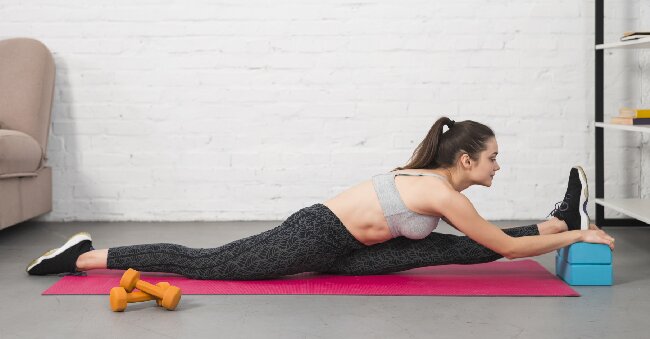
7 Essential Benefits of Yoga Bricks to Enhance Your Practice
If one is interested in enhancing their yoga practice, integrating yoga bricks can be beneficial in various ways.
This article will cover the basics of yoga brick10 Essential Benefits of Yoga Bricks to Enhance Your Practices, their utility in yoga sessions, the range of sizes and materials they come in, and the advantages they provide.
Information on fundamental exercises incorporating yoga bricks, adjustments, advancements suitable for individuals at all proficiency levels, and important guidelines for their secure and efficient use will be discussed.
Prepare to elevate your workout routine by incorporating these critical yoga props!
What Are Yoga Bricks?
Yoga Bricks are important accessories utilized in yoga and Pilates practices to improve and assist with various exercises. These adaptable props are available in various shapes, sizes, and materials to accommodate individual needs and preferences.
How Are Yoga Bricks Used in Yoga?
In yoga, bricks serve as tools to introduce variation and challenge to poses. They offer resistance, improve grip, and enhance stability, helping engage different muscle groups and maintain proper alignment during asanas.
Incorporating yoga bricks into one’s practice allows for the targeting of specific muscle groups more effectively. This can be achieved by adjusting the height and placement of the bricks to meet individual needs. For instance, using bricks in poses like Trikonasana (Triangle Pose) can aid in increasing the stretch along the sides of the torso while ensuring stability.
Yoga bricks are particularly beneficial for beginners or individuals with limited flexibility. They can assist in achieving proper alignment without causing strain on the body. The versatility of yoga bricks makes them essential props for practitioners of all levels who aim to deepen their practice and enrich their overall yoga experience.
What Are the Different Sizes and Materials of Yoga Bricks?
Yoga bricks are available in various sizes and materials, such as foam, cork, and wood, each offering different levels of support, stability, and comfort. The choice of size and material is essential to improve flexibility, balance, and alignment in poses.
Foam bricks are lightweight and offer some cushioning, making them suitable for beginners or individuals requiring additional joint support. In contrast, cork bricks provide a firmer surface, enhancing stability and alignment. Wood bricks, being a more eco-friendly option, are sturdy and provide robust support for weight-bearing poses.
The material of the brick affects how the body interacts with it during practice, influencing muscle engagement and overall posture. It is important to consider individual needs and preferences when selecting a yoga brick to enhance the yoga experience.
What Are the Benefits of Using Yoga Bricks?
Using yoga bricks provides a variety of benefits, such as:
- increased strength
- improved flexibility
- enhanced balance
- effective Pilates movements
- deeper stretching
- stronger core engagement
- improved body alignment
1. Provides Support and Stability
Yoga bricks serve as supportive tools that enhance stability training, providing support to the body’s muscles and helping to promote proper posture and alignment during yoga practice. These rectangular blocks are particularly beneficial for beginners or individuals aiming to deepen their stretches, enabling them to gradually improve strength and flexibility.
By strategically using yoga bricks under hands, feet, or hips, practitioners can access a wider range of motion while maintaining stability, which in turn aids in muscle engagement and helps prevent strain.
The versatility of yoga bricks allows for numerous modifications to cater to different levels of flexibility, making them a valuable prop for practitioners of all experience levels. Whether aiding in seated poses, offering height in standing poses, or aiding in finding balance during inversions, yoga bricks are essential tools for enhancing one’s yoga practice.
2. Helps with Alignment and Posture
One of the benefits of using yoga bricks is their assistance in improving body alignment, enhancing flexibility training, promoting stability, and supporting various poses during yoga sessions. These versatile tools are particularly useful for beginners or individuals with limited flexibility, as they allow for gradual progression and help prevent overstraining while aiming to achieve optimal alignment.
By strategically placing yoga bricks under hands, feet, or the torso, practitioners can modify and adjust poses to suit their current flexibility level, gradually increasing the intensity as they progress. This aids in building strength and stability while also reducing the risk of injury by ensuring proper alignment and posture during each pose.
3. Increases Flexibility and Range of Motion
Using yoga bricks can help enhance flexibility, increase range of motion, and deepen stretching exercises. They are valuable tools for improving yoga postures and optimizing fitness routines.
By incorporating yoga bricks into a practice, flexibility can gradually improve and overall performance in various yoga poses can be enhanced. The added support from the bricks allows for a gradual increase in range of motion, enabling deeper stretches with better control and stability.
Continued use of these props may lead to more accessible challenging poses and adaptation to new levels of flexibility and strength. Yoga bricks also aid in aligning the body correctly, ensuring proper form and balance throughout the practice.
4. Adds Challenge and Variety to Workouts
Yoga bricks offer a new level of challenge and versatility to workouts, enabling individuals to increase intensity, enhance stretching, and introduce variety to their fitness routines.
Incorporating yoga bricks into workout sessions can raise the difficulty of various exercises, like lunges or squats, by necessitating additional core engagement for balance and stability. These props are particularly useful for deepening stretches, as they provide support and help in maintaining proper alignment during poses such as seated forward bends or supported reclining twists. Using yoga bricks can bring new elements into a routine, maintaining the practice dynamic and engaging while targeting different muscle groups for a comprehensive workout.
What Are the Key Exercises for Using Yoga Bricks?
The addition of yoga bricks to one’s practice can offer substantial advantages to essential exercises like balance poses, core strengthening routines, Pilates movements, and muscle engagement activities.
1. Standing Poses
Yoga bricks serve as useful tools for enhancing balance, engaging the core, building muscle strength, and improving body alignment in various standing poses during a yoga practice.
When incorporating yoga bricks into balancing poses, they can offer vital support and stability, enabling practitioners to explore deeper stretches and positions confidently. For instance, placing a yoga brick between the thighs during poses like Tree Pose or Warrior III not only aids in balance but also activates the inner thigh muscles and involves the core, promoting a more centered and controlled posture.
When used as props in core exercises, yoga bricks can increase the level of difficulty by demanding greater control and focus to uphold proper form and alignment, ultimately resulting in enhanced strength and stability.
2. Balancing Poses
The use of yoga bricks in balancing poses can help improve flexibility, enhance stability, and ensure proper body alignment. This allows for a deeper practice and refinement of balance skills.
When incorporating yoga bricks, they can provide added height and support to reach positions that may be challenging due to flexibility limitations. They also create a stable base for balancing, reducing the risk of toppling over. The additional height from the bricks can facilitate maintaining proper alignment in poses such as Half Moon or Tree Pose by bringing the floor closer to you. This support enables focused engagement of the correct muscles and attainment of ideal alignment, leading to a more effective and controlled practice.
3. Backbends
When practicing backbends, yoga bricks can be used as effective props to improve flexibility, support stretching routines, engage core muscles, and provide resistance for safely deepening the pose.
These versatile tools can be strategically positioned under the hands or feet to raise the body, enabling a more pronounced arch in the back while performing poses like Upward-Facing Dog or Camel Pose. By adjusting the height of the brick, individuals can personalize the level of support and intensity, enhancing accessibility and benefits of backbends.
Incorporating yoga bricks into practice can help individuals maintain proper alignment, reduce the risk of strain or injury, and gradually advance in their backbend practice over time.
4. Hip Openers
In hip-opening poses, yoga bricks are used as supportive tools to deepen stretches, improve flexibility in the hips, and enhance alignment. This allows practitioners to access the full benefits of these poses. They are highly effective in aiding individuals in achieving a greater range of motion by providing support during postures like Pigeon Pose, Lizard Pose, or Butterfly Pose.
By strategically placing yoga bricks under the hips or thighs, practitioners can gradually work towards releasing tightness and tension in the hip area. This targeted support encourages proper alignment, helps prevent strain or injury, enables practitioners to hold poses longer, and delve deeper into the stretch, ultimately resulting in improved overall flexibility.
5. Core Strengthening
Yoga bricks can provide additional support for core strengthening exercises, aiding in stability training, increasing workout intensity, and effectively engaging the core muscles for improved strength and muscle toning.
Incorporating yoga bricks into workouts enables precise targeting of specific core muscles. Placing the bricks under hands or feet during planks can enhance engagement of the abdominals and obliques. Utilizing yoga bricks in exercises like boat pose or supported backbends introduces a challenge, requiring the core to work harder to maintain balance. The versatility of yoga bricks allows for various modifications, making core strengthening accessible for beginners and providing a challenge for experienced practitioners seeking to enhance their workouts.
How Can Yoga Bricks Be Used for Modifications and Progressions?
Yoga bricks are versatile tools that cater to practitioners at different levels by offering modifications for beginners and progressions for intermediate and advanced users, providing essential support and enhancing the yoga experience.
1. Modifications for Beginners
Yoga bricks are useful training aids for beginners to support foundational poses, enhance the workout experience, and gradually introduce fitness gear into their practice, ensuring a safe and structured progression.
These blocks assist in achieving proper alignment and extending reach in various poses, making them accessible for individuals who may struggle with flexibility or balance. By strategically using yoga bricks, beginners can modify challenging poses to match their current level of strength and flexibility, thus reducing the risk of injury and boosting confidence. Incorporating yoga bricks into one’s practice can enhance the workout by enabling deeper stretches and improved stability, ultimately contributing to the development of strength and endurance.
2. Progressions for Advanced Practitioners
Experienced individuals can benefit from using yoga bricks to enhance their practice by intensifying workouts, increasing challenges, and introducing new aspects to familiar poses, enriching their yoga experience and expanding their capabilities.
By integrating yoga bricks into their routine, advanced practitioners can experiment with variations of traditional poses like the Warrior series, Triangle pose, or balancing poses such as Tree or Eagle. These props can be strategically placed to deepen stretches, enhance alignment, and offer support during complex arm balances or inversions. Inclusion of yoga bricks can assist users in effectively engaging muscles, targeting specific areas for strength development, and fostering stability and balance in demanding postures.
What Are Some Tips for Using Yoga Bricks Safely and Effectively?
For safe and effective use of yoga bricks, it is important to follow proper yoga instructions, focus on improving flexibility training, engage muscles mindfully, and ensure that the props provide support without compromising form or alignment.
Maintaining correct form and alignment is essential in yoga practice, and yoga bricks can be a valuable tool in achieving this. When utilizing yoga bricks, it is important to pay attention to body alignment and make adjustments to the props as needed to support postures. It is crucial to understand that yoga bricks are intended to assist in practice, not to push for unrealistic stretches or poses. By using yoga bricks mindfully, individuals can gradually enhance strength, increase flexibility, and reduce the risk of injuries. The goal is to utilize the props as aids that enhance the practice, rather than as replacements for proper alignment and engagement.




No Comments